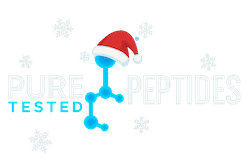NAD+ – Cellular Energetics & Longevity Research Themes
Target keywords: NAD+ research, cellular energetics longevity
This page provides an informational summary of published research themes related to NAD+—including signals relevant to muscle gain, fat loss, longevity, and metabolism—reported in preclinical contexts and model systems. View the NAD+ product page on PureTestedPeptides.com.
Published Research Themes on NAD+
- Study contexts: in vitro assays, ex vivo preparations, and animal models reported in the literature.
- Common endpoints: molecular pathway activation, biomarker changes, tissue-level observations, and assay readouts.
- Scope: This page summarizes themes without implying outcomes in humans.
Muscle Gain & Body Composition Signals (Preclinical/Model Systems)
Across preclinical reports, investigators have described signals consistent with muscle-related pathways (e.g., GH/IGF axis, mitochondrial efficiency, or matrix/tissue remodeling) depending on study design. These descriptions are model-specific and should not be generalized to clinical use.
FL & Metabolic Signaling (Preclinical/Model Systems)
Model-system studies sometimes explore energy balance and lipid metabolism pathways (e.g., incretin signaling, mitochondrial oxidative capacity, or activity-related peptide signaling). Any observations are context-bound to the specific models employed.
Longevity & Cellular Health Markers (Preclinical/Model Systems)
Some publications evaluate cellular stress responses, redox balance, and markers frequently discussed in the longevity research community. These findings are mechanistic and exploratory rather than clinical guidance.
Analytical Verification & Handling Notes
Researchers commonly report identity and purity verification using HPLC and mass spectrometry prior to experimentation, alongside careful handling (temperature, light, solvent, and sterility controls). For a broader catalog, see all peptides for sale.
Important Research-Only Notice
For laboratory research use only. Not for human consumption. No medical, dosing, or therapeutic guidance is provided. Information below summarizes published research themes (in vitro, ex vivo, and/or animal models) and is intended for qualified researchers.
Product page: View the NAD+ product page.
